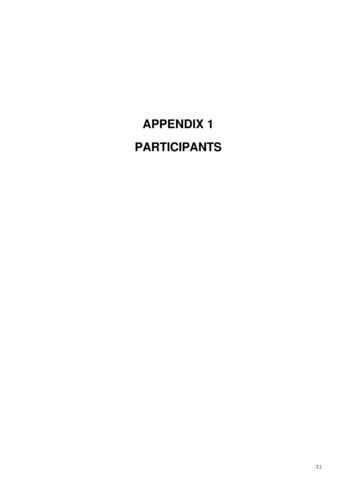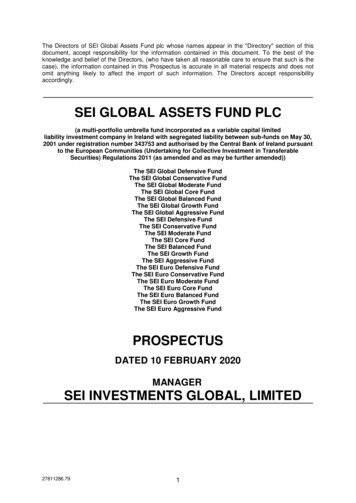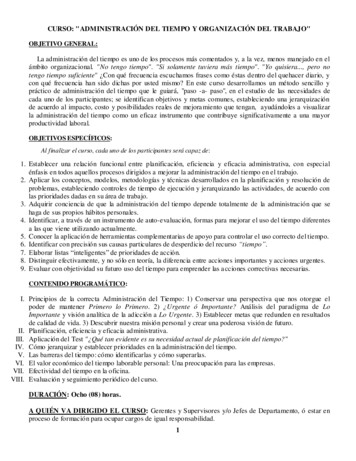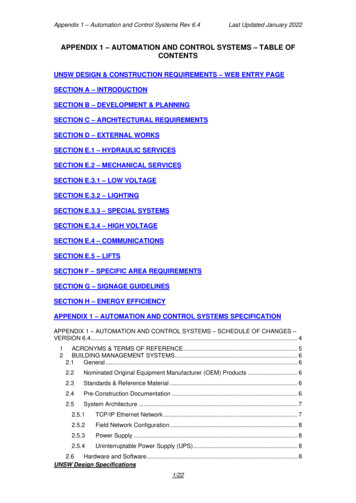
Transcription
APPENDIX 1PARTICIPANTS31
32
The Impact of El Niño and La Niña on Southeast AsiaFortuna Hotel, Hanoi, Vietnam21 - 23 February 2000NAMEROGER C STONEWILLIAM RKININMONTHHJ SIDUP HJSIRABAHACHEA SINALONG RITHIRAKMAK SIDETHWANG SHAO ADDRESSPrincipal Research Scientist,Queensland Center for ClimateApplications, Department ofPrimary Industries, PO Box 102,Toowoomba, Qld 4350, AustraliaAustraliaAustralasian Climate Research,23 Holroyd Street, Kew, Vic 3101,AustraliaBruneiBrunei Meteorological Service,Department of Civil Aviation,Ministry of Communications,Brunei Darussalam, 261Kg.Bebatek, Jalan Bebatik Kilanas,Brunei Darussalam BF 2320Current address: ClimaticResearch Unit, School ofEnvironmental Sciences, Universityof East Anglia, Norwich NR4 7TJ,UKCambodia Deputy Director of PollutionControl Department, Ministry ofEnvironment, 48 Samdech PreahSihanouk, Tonle Basac, ChamkarMorn, Phnom Penh, CambodiaCambodia Technical Advisor and Chief ofCoordination Unit, Ministry ofEnvironment, 48 Samdech PreahSihanouk, Tonle Basac, ChamkarMorn, Phnom Penh, CambodiaCambodia Chief Office, EnvironmentalEducation and Training,Department of EnvironmentalEducation and Communication,Ministry of Environment, 48Samdech Preah Sihanouk, TonleBasac, Chamkar Morn, PhnomPenh, CambodiaChinaDepartment of Geography, PekingUniversity, Beijing, 100871,People's Republic of ChinaGermany Programme Manager, APNSecretariat, 5th Fl, IHD CenterBldg., 1-5-1 Wakinohama KaiganDori, Chuo-ku, Kobe 651-0073,JapanJapanUnited Graduate School ofAgricultural Science, TokyoUniversity of Agriculture andTechnology, 3-5-8 Saiwai-cho,Fuchuu-city, Tokyo 844855-23-427844minenvlb@forum.org.kh,mak sideth@hotmail.com86-10-62755568 86-10-62754294 swwang@pku.edu.cn81-78-230801781 78 167mikiyasu@cc.tuat.ac.jp33
NAMEKHAMPAOHOMPANGNACOUNTRYProject Manager of NationalDisaster Management Office,Ministry of Labor and SocialWelfare, PO Box 347, Vientiane,Lao PDRPHETSAVANGLao PDRDeputy Director General, DirectorSOUNNALATHNational Disaster ManagementOffice, Pangkham Rd, PO Box347, Vientiane, Lao PDRSENGDEUANELao PDRTraining Manager of NationalPHOMAVONGSADisaster Management Office,Ministry of Labor and SocialWelfare, PO Box 347, Vientiane,Lao PDRSITHALao PDRActing Director General ofPHOUYAVONGCabinet, Science, Technology andEnvironment Agency, PO Box2279, Vientiane, Lao PDROOI SEE HAIMalaysiaMalaysian Meteorological Service,Jalan Sultan, 46667 PetalangJaya, Selangor, MalaysiaU TUN LWINMyanmarDirector, Department ofMeteorology and Hydrology,Ministry of Communications, Postsand Telegraphs, Mayangon POBox 11061, Kaba-Aye PagodaRoad, Yangor, MyanmarAIDA M JOSEPhilippinesChief, Climatology andAgrometeorology Branch, 7thFloor Asia Trust Bank Bldg., POBox 2277 Manila, Quezon City,PhilippinesSANNY R JEGILLOS PhilippinesDirector Asia Operations, AsiaPacific Disaster ManagementCentre, PO Box 1005, MakatiCentral Post Office, 1250 MakatiCity, PhilippinesPATIPATThailandDeputy Director General,PATVIVATSIRIMeteorological Department, 4353Sukumvit Road, Bangna,Prakanong, Bangkok 10260,ThailandJOHN CAESARUnitedClimatic Research Unit, School ofKingdomEnvironmental Sciences,University of East Anglia, NorwichNR4 7TJ, UKLOUISE BOHNUnitedClimatic Research Unit, UniversityKingdomof East Anglia, Norwich, Norfolk,NR47TJ, UKMICK KELLYUnitedClimatic Research Unit, School ofKingdomEnvironmental Sciences,University of East Anglia, NorwichNR4 7TJ, UKSARAH GRANICH UnitedEnvironmental Consultant, 7 AmesKingdomCourt, Cawston, Norwich NR104QD, UKSIMON JAMESUnited States Scripps Institution ofMASONOceanography, University ofCalifornia, San Diego, 9500Gilman Drive, La Jolla, CA 920930235, USA34Lao PDRADDRESSTELFAXEMAIL856-21-219450 856-21-219525 ndmo@pan-laos.net.la856-21-219450/ 856-21-219525 ndmo@222778/213005pan.laos.net.la856-21-219450 856-21-219525 sengdeuane@hotmail.com856-21-218738/ 856-21-213472 h@kjc.gov.my095-01-660526/ -8222574 1-619-5348087 simon@lacosta.ucsd.edu
NAMECOUNTRYBUI KIM OANHVietnamBUI THE GIANGVietnamDANG DANH ANHVietnamDANG HUU HUNGVietnamDO THI VANVietnamDO TRONG KHUEVietnamDOAN NANGVietnamDUONG DUC DUNGVietnamDUONG LIEN CHAUVietnamHA NGHIEPVietnamHOANG MINH HIENVietnamLE DINH QUANGVietnamLE DUC NHUANVietnamLE TUYET HANHVietnamLUONG QUANG HUYVietnamNGO CAM THANHVietnamNGUYEN DAI KHANH VietnamADDRESSCenter for Environment Research,Education and Development, A01,K40, Giangvo, Hanoi, VietnamPeople International RelationshipDepartment, Hanoi, VietnamVietnam Union of Science andTechnology Associations, 53 NguyenDu, Hanoi, VietnamNational Scientific Magazine, 53Nguyen Du, Hanoi, VietnamVietnam Union of Science andTechnology Associations, 53 NguyenDu, Hanoi, VietnamVietnam Union of Science andTechnology Associations, 53 NguyenDu, Hanoi, VietnamDirector, Department of Law, Ministryof Science, Technology andEnvironment, 39 Tran Hung Dao,Hanoi, VietnamInternational RelationshipDepartment, Ministry of Science,Technology and Environment, 39Tran Hung Dao, Hanoi, VietnamNational Hydro-Meteorology Serviceof SR Vietnam, Hanoi, VietnamVietnam Union of Science andTechnology Associations, 53 NguyenDu, Hanoi, VietnamNational Hydro-Meteorology Service,Hanoi, Vietnam, 4 Dang Thai Than,Hanoi, VietnamInstitute of Meteorology, Center forResearch on the Tropical Meteorologyand Typhoon, 57 Nguyen Du, Hanoi,VietnamVietnam Union of Science andTechnology Associations, 53 NguyenDu, Hanoi, VietnamScience and Life Newspaper, 70 TranHung Dao, Hanoi, VietnamCenter for Environment Research,Education and Development, A01,K40, Giangvo, Hanoi, VietnamCenter for Environment Research,Education and Development, A01,K40, Giangvo, Hanoi, VietnamInternational CooperationDepartment, National HydroMeteorology Service of SR VietnamTELFAXEMAIL84-4-51521384-4-8515213 4-4-422759384-4-8250 8 met srf@fpt.vn84-4-933024984-4-8254278 hmh@netnam.vn84-4-826387384-4-4430006 515213 cered@hn.vnn.vn84-4-826408784-4-8260779 icd.hms@fpt.vn84-4-8515213 huy8477@vol.vnn.vn35
NAMECOUNTRYNGUYEN DUY HUUVietnamNGUYEN HUU NINHVietnamNGUYEN LAM HOEVietnamNGUYEN MANH DONVietnamNGUYEN THANH HAVietnamNGUYEN THANHHUONGNGUYEN THANHVINHNGUYEN THI DUOCVietnamNGUYEN THI HAIVietnamNGUYEN THUC NHUVietnamNGUYEN TRONGKHANHVietnamNGUYEN TRONGTHANHVietnamNGUYEN VAN HAIVietnamVietnamVietnamNGUYEN VAN THANG VietnamNGUYEN VAN TUANVietnamNGUYEN VINH THUVietnamTO BA TRONGVietnamTRAN BANG TAMVietnamTRAN DUC HAIVietnam36ADDRESSNational Scientific Magazine, 53Nguyen Du, Hanoi, VietnamCenter for Environment Research,Education and Development, A01,K40, Giangvo, Hanoi, VietnamCenter for Environment Research,Education and Development, A01,K40, Giangvo, Hanoi, VietnamVietnam Union of Science andTechnology Associations, 53 NguyenDu, Hanoi, VietnamThanhha Investment Consultancyand International Trading CompanyLtd., 21 Nguyen Chi Thanh, Hanoi,VietnamNews Division-Vietnam Television,Giangvo, Hanoi, VietnamVietnam Marine Science Association,Hanoi, VietnamVietnam Union of Science andTechnology Associations, 53 NguyenDu, Hanoi, VietnamCenter for Environment Research,Education and Development, A01,K40, Giangvo, Hanoi, VietnamGeographical Association, Hanoi,VietnamVietnam Union of Science andTechnology Associations, 53 NguyenDu, Hanoi, VietnamCenter for Environment Research,Education and Development, A01,K40, Giangvo, Hanoi, VietnamHydro-Meteorology Service of SRVietnamDeputy Director, Institute ofMeteorology and Hydrology, ClimateResearch Center, Lang, Dongda,Hanoi, VietnamDean, Hydro-MeteorologyDepartment, Faculty of Geography,HUS. 334 Nguyen Trai, Hanoi,VietnamNational Hydro-Meteorology Service,Hanoi, Vietnam, 4 Dang Thai Than,Hanoi, VietnamMember of Presidium, Chairman ofThe Inspection Committee, VietnamUnion of Science and TechnologyAssociations, 53 Nguyen Du, Hanoi,VietnamDepartment of Soil Information,Hanoi Agriculture University,Chauquy, Gialam, Hanoi, VietnamDeputy Director, International Cooperation Department,Hydrometeological Service of SRVietnamTELFAXEMAIL84-4-8264953 84-4-826495384-4-8515213 84-4-8515213cered@hn.vnn.vn84-4-8515213 84-4-8515213cered@hn.vnn.vn84-4-22643584-4-7715655 84-4-7715661thhn@hn.vnn.vn84-4-771530084-4-7760752 84-4-823091584-4-8257785 84-4-422759384-4-8515213 8 84-4-422759384-4-8515213 84-4-8515213cered@hn.vnn.vn84-4-8244120 359415 -8262108 84-4-422759384-4-765588tbtam@hn.vnn.vn84-4-8242603 84-4-8260779icd.hms@fpt.vn
NAMETRAN DUY BINHCOUNTRYVietnamTRAN QUANG NGOC VietnamTRAN QUANG TUAN VietnamTRAN SY QUYVietnamTRAN TAN TIENVietnamTRAN THANH XUAN VietnamTRAN THI TYVietnamTRAN THU TRANGVietnamTRAN THUCVietnamTRAN VO CHAUVietnamTRUONG QUANGHAITRUONG QUANGCUONGVietnamVU MINH MAOVietnamVU TUYEN HOANGVietnamVietnamADDRESSDirector, Institute of Meteorologyand Hydrology, Nguyen Chi Thanh,Hanoi, VietnamNational Hydro-MeteorologyService, Hanoi, Vietnam, 4 DangThai Than, Hanoi, VietnamVietnam Economic Times, Hanoi,VietnamVietnam Union of Science andTechnology Associations, 53Nguyen Du, Hanoi, VietnamDeputy Dean, Faculty of HydroMeteorology, Hanoi University ofSciences, Hanoi, VietnamDeputy Director, Institute ofMeteorology and Hydrology,Nguyen Chi Thanh, Hanoi, VietnamInternational RelationshipDepartment, Vietnam Union ofScience and TechnologyAssociations, 53 Nguyen Du,Hanoi, VietnamCenter for Environment Research,Education and Development, A01,K40, Giangvo, Hanoi, VietnamInstitute of Meteorology andHydrology, Water and AtmosphericEnvironment Research Center,Langtrung, Dongda, Hanoi,VietnamGeological Association, 6 PhamNgu Lao, Hanoi, VietnamFaculty of Geography, VietnamNational UniversityPeople-to-people RelationsDepartment, 1C Hoang Van Thu,Hanoi, VietnamMP Vice Chairman, Committee onScience, Technology andEnvironment, 35 Ngoquyen, Hanoi,VietnamPresident, Vietnam Union ofScience and TechnologyAssociations, 53 Nguyen Du,Hanoi, VietnamTELFAXEMAIL84-4-835954084-4-8355993 1384-4-8515213 cered@hn.vnn.vn84-4-835949184-4-8355993 420haithu@hn.vnn.vn84-4-845376484-4-733012984 80 4284284 80 4699784-4-826210884-4-4227593ubkhcnmt@hn.vnn.vn37
38
APPENDIX 2WORKSHOP AGENDA39
40
THE IMPACT OF EL NIÑO AND LA NIÑA ON SOUTHEAST ASIAFORTUNA HOTEL, HANOI, VIETNAM21 - 23 FEBRUARY 2000VUSTA/CERED/APN/UEA WORKSHOPAGENDADAY 1, FEBRUARY 21ST 20008.15-9.00RegistrationOPEN SESSION: INTRODUCTION AND GLOBAL OVERVIEW9.00-10.00Chair: Dr. Nguyen Huu Ninh Opening address: Professor Academician Vu Tuyen Hoang, Chairman of Vietnam Union of Science andTechnology Associations (VUSTA), 10 mins Welcome speech: Dr. Vu Minh Mao, MP, Vice Chairman, Committee on Science,Technology and Environment, National Assembly of Vietnam, 10 mins Introduction to meeting: Dr. Nguyen Huu Ninh, CERED/ Dr. Mick Kelly, University of East Anglia, 10mins APN introduction: Representative of the Asia-Pacific Network for Global Change Research - Dr.Gerhard Breulmann, 10 mins Global overview of the El Niño Southern Oscillation (ENSO) phenomenon: Dr.William Kininmonth,Australasian Climate Research, Australia, 25 mins10.10-10.30Refreshment breakOPEN SESSION: CLIMATE EFFECTS AND SOCIETAL IMPACTS10.40-12.30Chair: Dr. Mick Kelly Significance of El Niño and La Niña for Southeast Asia: Mr. Sidup Bin HJ Sirabaha, BruneiMeteorological Service, Brunei, 20 mins Natural hazards in Laos: Mr. Sengdeuane Phomavongsa, National Disaster Management Office, Laos,20 mins Natural hazards in Cambodia: Mr. Mak Sideth, Ministry of Environment, Cambodia , 20 mins Effect on typhoon occurrence in Vietnam: Dr. Hoang Minh Hien, Hydro-Meteorological Service,Vietnam, 20 mins Open discussion12.30-14.00Buffet lunchCLOSED SESSION: IMPACT ASSESSMENT14.00-16.00Chair: Dr. Mick Kelly Working group discussion I - Impact assessmentRefreshments served 16.0041
16.30-17.00Chair: Dr. Nguyen Huu Ninh/Dr. Mick Kelly Summary of working group recommendations and general discussion18.00-20.00Reception for international participants hosted by the Vice-Chairman of the Committee on Science, Technology andEnvironment of the National Assembly of Vietnam at the Office of the National Assembly of Vietnam.Followed by dinner at the Hilton Hanoi Opera Hotel.DAY 2, TUESDAY, FEBRUARY 22ND 2000OPEN SESSION: SEASONAL CLIMATE FORECASTING9.00-10.40Chair Dr. William Kininmonth International forecasts of the ENSO phenomenon: Dr. Simon Mason, UCSD/IRI, United States, 20 mins Practical aspects of forecasting rainfall in eastern Australia and Southeast Asia using ENSO indicators:Dr. Roger Stone, Queensland Centre for Climate Applications, Australia, 20 mins Climate forecasting in China: Prof. Wang Shaowu, Peking University, PR China, 20 mins Climate forecasting in Vietnam: Dr. Nguyen Van Thang, Climate Research Center, Vietnam, 20 mins Use of seasonal forecasts: Ms. Louise Bohn, University of East Anglia, UK, 20 mins Open discussion10.40-11.00Refreshment breakOPEN SESSION: RESPONSE STRATEGIES11.00-12.20Chair: Prof. Mikiyasu Nakayama Responding to El Niño and La Niña: Priorities for the region, Dr. Sanny Jegillos, APDMC, Philippines, 20mins The response to the flooding in Central Vietnam in 1999: Dr.Tran Thanh Xuan, Institute of HydroMeteorology, Vietnam, 20 mins The lessons of Typhoon Linda, Vietnam – Ms. Duong Lien Chau, Hydro-Meteorological Service, Vietnam,20 mins The impacts of El Niño and La Niña on Myanmar – Mr. U Tun Lwin, Department of Meteorology andHydrology of Myanmar, 20 mins Open discussion12.20-14.00Buffet LunchAfternoon free18.00-20.00Dinner at the Cha Ca La Vong restaurantDAY 3, WEDNESDAY, FEBRUARY 23RD 2000CLOSED SESSION: PROSPECTS FOR PREDICTION9.00-11.45Chair: Dr. Mick Kelly Working group discussion II - Prospects for prediction42
Refreshments served 10.3011.45-12.30Chair: Dr. Nguyen Huu Ninh/Dr. Mick Kelly Summary of working group recommendations and general discussion12.30-14.00Buffet lunchCLOSED SESSION: RESPONDING TO EL NIÑO AND LA NIÑA14.00-15.30Chair: Dr. Mick Kelly Working group discussion II - Responding to El Niño and La Niña15.30-16.00Refreshment breakOPEN SESSION: CONCLUSIONS AND CLOSE OF MEETING16.00-17.00Chair: Dr. Nguyen Huu Ninh/Dr. Mick Kelly Summary of working group recommendations and general discussion Workshop statement on latest assessment of La Niña breakdown Evaluation of workshop outcome The next stage of the Indochina Global Change Network Close of meeting18.00-20.00Dinner at the Lau Tu Xuyen restaurantAdditional presentationsDuring the course of the working group sessions, short presentations were made by Dr. Ooi See Hai (MalaysianMeteorological Service), Dr. Aida Jose (Climatology and Agrometeorology Branch, Philippines) and Dr. PatipatPatvivatsiri (Meteorological Department, Thailand) on the impact of El Niño and La Niña and associated research intheir respective countries. Dr. Nguyen Van Viet (Institute of Meteorology and Hydrology, Vietnam) described thesignificant impact of El Niño and La Niña on rice production in Vietnam. Dr. Aida Jose discussed work on monitoringand early warning in the Philippines and Dr. Le Van Sanh (Vietnam Committee for the International HydrologicalProgram) presented an account of the recommendations of the Vietnam Committee for the International HydrologicalProgram with respect to the El Niño-Southern Oscillation Phenomenon.43
44
APPENDIX 3THE INDOCHINA GLOBAL CHANGE NETWORK45
46
THE INDOCHINA GLOBAL CHANGE NETWORKThe overall goal of the Indochina Global Change Network is to strengthen the scientific capacity of Cambodia, Laos andVietnam and hence the ability of these nations to respond to the threat posed by global environmental change and relatedhazards. Network activities include policy-relevant information provision, training and research on global change issues.The Network has three main aims: to foster and provide support for focused capacity-strengthening projects, directed at specific regional needs; to provide training in global change studies through workshops, studentships and fellowships and to promote thedevelopment of relevant educational materials for the scientific community, policy makers and the general public;and, to foster and, where appropriate, coordinate regional research on global environmental change, providing high-levelexpertise in support of policy development.The Network is pledged to interdisciplinary research and, in particular, the fusion of biophysical and socio-economicmethods. The Network is also committed to a long-term perspective since the problems of global change havecharacteristic timescales of decades to centuries. The Network recognizes that an effective precautionary response tolong-term environmental change must be based on action to reduce present-day vulnerability and that this is, in manycases, a more immediate development priority. Finally, the Network is dedicated to the ideal of sustainabledevelopment, meeting present-day needs while ensuring environmental security across both space and time, through thefostering and coordination of regional activities on global environmental change and related hazards.Past Network activities have been supported by the Netherlands Foundation for the Advancement of Tropical Research(WOTRO) and the Asia-Pacific Network for Global Change Research. Activities planned for the coming period includetraining workshops on climate prediction and impact assessment and training, information provision and research onland-cover change, coastal zone management and other issues.The Indochina Global Change Network is coordinated by Dr. Nguyen Huu Ninh of the Center for EnvironmentResearch Education and Development, Hanoi, Vietnam, with technical support from Dr. Mick Kelly and Ms. SarahGranich.Secretariat Office:Indochina Global Change NetworkCenter for Environment Research Education and DevelopmentA01, K40, Giang Vo, Hanoi, VietnamTel/fax: 84-4-8515213Email: cered@hn.vnn.vn47
48
APPENDIX 4SUMMARY PAPERS49
50
CONTENTSGlobal Overview of the El Nino Southern Oscillation PhenomenonWilliam Kininmonth . 53Significance of the El Nino Southern Oscillation for Southeast AsiaS. Sirabaha and J. Caesar . 55ENSO’S Effects on Activity of Typhoons in Western North Pacific, Bien Dong Sea AndVietnamHoang Minh Hien. 57Factors Contributing to Climate Change in CambodiaLong Rithirak, Mak Sideth and Chea Sina. 61Effects of El Niño and La Niña on LaosKhampao Hompangna, Sengdeuane Phomavongsa, Sitha Phouvayongand Phetsavang Sounnalath. 63The Impacts of El Niño and La Niña Events on the Climate Of MyanmarU Tun Lwin. 69International Forecasts of the ENSO PhenomenonSimon J. Mason. 71Practical Aspects of Forecasting Rainfall in Eastern Australia and South East Asia Using ElNino/Southern Oscillation (ENSO) IndicatorsRoger C Stone . 75Overview of Climate Forecasting in VietnamNguyen Van Thang . 81Climate Forecasting in ChinaWang Shaowu . 83The Use of Seasonal ForecastsLouise Bohn . 85Two Big Floods Occurred at the End of 1999 in Central VietnamTran Thanh Xuan and Tran Thuc. 89Lessons from Severe Tropical Storm LindaDuong Lien Chau . 91Managing Risks Associated with ENSO: Priorities for the RegionSanny Jegillos . 9551
52
GLOBAL OVERVIEW OF THE EL NIÑO SOUTHERN OSCILLATIONPHENOMENONWilliam KininmonthAustralasian Climate ResearchMelbourne, AustraliaOver the past two decades the term El Niño has become synonymous with social, economic andenvironmental crises in many parts of the globe. El Niño events signal major departures fromnormal seasonal climate patterns, particularly over tropical regions. For some countries an El Niñoevent is typically associated with abnormal heat and drought, for others it is persisting rain anddevastating flooding.El Niño was originally the name given by local fishermen to the annual appearance of a warmsouthward flowing current in the surface waters off coastal Ecuador and northern Peru during theSouthern Hemisphere summer (December-February). The coastal communities also recognised thatin some years the offshore waters were warmer than usual and cold nutrient rich waters failed toreturn during the following year, giving a poor fish harvest and with disastrous consequences onlocal food stocks and community welfare. Flood rains that caused loss of life and severe damageoften accompanied the periods of abnormally warm coastal waters. Now it is the periods ofprolonged abnormal warming that are referred to as El Niño events. However, it was not until themid-1960s that the El Niño phenomenon was recognised as of more than local significance. Newglobal data sets have established linkages between the El Niño of the eastern equatorial PacificOcean and the Southern Oscillation that affects weather patterns across the tropical Pacific Ocean.The fluctuating characteristics of the ocean and atmospheric circulations across the equatorialPacific Ocean arise because of the coupling of the ocean and atmosphere through wind stress andfrom the transfer of heat, moisture (latent energy) and momentum. Positive feedbacks assist inmaintaining the Walker Circulation of the atmosphere and surface layer characteristics across theequatorial Pacific Ocean. During an El Niño event, however, warm surface water spreads eastwardacross the equatorial Pacific Ocean towards South America and upwelling of cold water is reduced.The combined effect of the influx of warm water and the reduction of upwelling is to produce awarmer than normal surface layer over an extensive area of the central and eastern equatorial PacificOcean. The reduced equatorial cross-Pacific sea surface temperature gradient weakens both theoverlying surface atmospheric pressure gradient and the strength of the surface Trade Winds.Studies associated with the TOGA project have identified that the positive anomalies of tropical seasurface temperature act as an abnormal source of heat, moisture and momentum to the atmosphereand force the tropical circulation in a direct sense. As an outcome of the improved climatemonitoring capability arising from the TOGA project many aspects of the forcing of theatmospheric circulation by the 1997-98 El Niño can be readily identified. Early in the event (June toAugust) there was enhanced deep atmospheric convection over the central equatorial Pacific Oceanand a reduction in deep atmospheric convection over the western Pacific. As the El Niño eventdeveloped (September to November) there was a strengthening of the intensity of abnormalconvection over the central equatorial Pacific Ocean. At the same time there was a continuingreduction in the intensity of deep atmospheric convection and cumulative regional rainfall over thewestern Pacific Ocean. During the mature phase of the El Niño event (December to February) theregion of anomalous deep atmospheric convection extended eastward to coastal South America. Atthis time there was also a reduction in the deep atmospheric convection associated with the53
intertropical convergence zone (ITCZ) north of the equator across the Pacific Ocean. The islands ofthe equatorial western Pacific Ocean that generally receive high rainfall were drier than normal andmany experienced drought. The generally dry coastal regions of Ecuador and Peru received copiousrain that caused much damage. Also, seasonal tropical storms of the western Pacific Ocean tendedto form further east than usual over the abnormally warm ocean and made little contribution to theseasonal rainfall of the Philippines.Empirical teleconnection patterns have been derived that imply physical/dynamical processesaccount for the simultaneous variation of weather patterns over various parts of the globe inresponse to distant ocean forcing. During El Niño events the patterns of anomalous deep tropicalconvection over the central and eastern equatorial Pacific Ocean are able to persist on seasonaltimescales and develop large-scale overturning circulations. Strong upper atmosphere divergenceover the regions of convection in the tropics and convergence in the subtropics act as a Rossby wavesource. (Rossby waves are large scale (planetary) waves in the horizontal flow of the atmospherethat grow in amplitude as a result of the change in relative spinning motion of the earth from lowerto higher latitudes.) The February 1998 upper atmosphere (250 hPa – about 10.5 km altitude)geopotential height anomalies had, over the eastern Pacific ocean, similarities to the forcingnecessary to generate Rossby waves. A persisting feature over East Asia was the strong anticycloniccirculation over northern China and the cyclonic circulation to its south.In the comparison of different El Niño events there is a set of broadly repeating patterns ofsignificant anomalies in the occurrence of deep atmospheric convection and these indicate acharacteristic response to El Niño forcing in some regions of the globe. In other parts of the globethere are significant responses but the characteristics are not the same for each event.For development of sectoral response strategies to mitigate the impacts and to take advantage of anyfavourable opportunities during El Niño events it is essential for each country to have access toglobal, regional and national climate monitoring products. The Global Climate Observing System(GCOS) based on the World Weather Watch (WWW) is an outcome of international cooperationand already provides an array of products accessible over the Internet. More detailed assessments ofthe scale and extent of climate anomalies affecting countries will require cooperation at the regionallevel and this would be assisted by the establishment of regional climate centres. National climatecentres are necessary to manage the essential climate data archives and provide a focus to ensurethat national needs for climate information and prediction services are met and that essentialproducts are available for other agency and industry needs.54
SIGNIFICANCE OF THE EL NIÑO SOUTHERNOSCILLATION FOR SOUTHEAST ASIAS. Sirabaha1Brunei Meteorological ServiceJ. CaesarClimatic Research Unit, School of Environmental SciencesUniversity of East AngliaSUMMARYThe El Niño Southern Oscillation (ENSO) phenomenon is highly significant for the countries ofSoutheast Asia (SEA). On intraseasonal and interannual time-scales, ENSO forcing has a profoundimpact on climate and weather in this region. During El Niño and La Niña events the warming andcooling of the tropical Pacific Ocean causes large-scale changes in the atmospheric circulation in theregion. One of the contributors to drought conditions in SEA appears to be a major eastward shift ofthe upper anticyclonic at 200mb whose location is related to a major shift of the east-west WalkerCirculation. The velocity potential at the higher level (200mb) is used to diagnose the divergentoutflows with respect to monsoonal and ENSO forcing. Through the velocity potential,displacement of convective areas with respect to weakening of the Walker Circulation due to ElNiño can easily be determined, and vice-versa during La Niña events.An El Niño event is ass
Climatic Research Unit, School of Environmental Sciences, University of East Anglia, Norwich NR4 7TJ, UK 44-1603-592091 44-1603-507784 m.kelly@ uea.ac.uk SARAH GRANICH United Kingdom Environmental Consultant, 7 Ames Court, Cawston, Norwich NR10 4QD, UK 44-1603-870788 44-1603-870788 sarah.granich@ virgin.net SIMON JAMES MASON United States .











